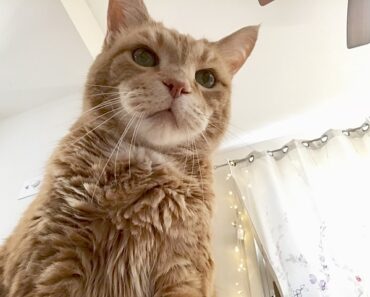
Great “cracks” use it before each competition! What is sometimes ignored is that osteopathy also finds its place in the health field for other pets, dogs, cats, new pets (NAC) and even sometimes in farm animals!
What is animal osteopathy?
Osteopathy is an alternative medicine, and in this sense it is opposed to more “classical” medicine, which mainly uses medication and surgery to cure illnesses. There is no scientific data to support the theories of osteopaths, which explains why there are regularly disagreements between osteopathic and traditional medicine practitioners.
Osteopaths strive for a holistic view of the body as a whole. They use their hands to treat restrictions of mobility that can affect bones, muscles or viscera. For osteopaths, a problem of mobility in one part of the body can explain an imbalance in the patient’s state of health, and therefore abnormalities in the functioning of organs. This is why osteopaths must have a thorough knowledge of anatomy. They must be familiar with the links between the different structures of the body and its normal functioning.
The techniques used are multiple and vary greatly from one osteopath to another. A distinction is made between structural, visceral and cranial osteopathy.
-Structural osteopathy
is interested in bones, joints and muscles. She treats in particular by massages and techniques of mobilization of the joints.
-Visceral osteopathy
acts on the organs of the thorax and abdomen. It is based on the premise that an organ that is in pain, sensitive, is less mobile. Visceral manipulations” aim to restore this mobility.
- Cranial osteopathy
concerns the skull and its structures, and is based on the study of “Primary Respiratory Movement” (PRM): this is a regular movement of the body, correlated to breathing, which would be palpable between the different bones of the skull. Abnormalities in the rhythm of this movement would be a sign of a dysfunction of the organism. However, the existence of MRP is contested by classical medicine, and even by some osteopaths.
These three approaches are considered complementary and in most cases they are mixed during the osteopathic consultation.
The main principles of animal osteopathy are in fact the same as for human osteopathy. However, the approach of the patient is a little more delicate, because osteopathy, to be practiced in good conditions, requires the cooperation and calm of the animal. Patience, know-how and a good contact with the animals are therefore necessary, because it is necessary to gain their trust.
How does an osteopathy consultation take place?
An osteopathy consultation can last from ten minutes to more than an hour. It can take place in a preventive way, as a “maintenance”, with a regular consultation once a year to stimulate immunity and relieve musculoskeletal tensions. But the consultation can also follow the appearance of a health problem.
After having explained to the osteopath the reason for your consultation, he will ask you many questions to better understand the history of your animal and its problem. Whatever the reason for the consultation, the animal is examined and above all palpated as a whole to detect restrictions and tensions in its body. For novices, the disappointment can be heavy just after an osteopathic consultation, because one can have the impression that the practitioner simply put his hands on the animal and did “nothing”. In reality, osteopaths claim through their experience to be able to perceive very subtle tensions in the animal’s body: MRP of course, but also emotions, even energy flows. In any case, do not hesitate to ask questions and have what you do not understand explained. The osteopath acts on the problem, but also stimulates the animal’s self-healing power. Usually two to three sessions are enough to treat a problem. The benefits are to be expected in the days following the consultation and are manifested by an overall improvement in the general condition, which is not limited to the simple symptoms that motivated the consultation!
When can I consider using an osteopath for my pet?
This is a question that is difficult to answer! Currently, the benefits and foundations of osteopathy are not scientifically proven. However, more and more veterinarians are convinced of its interest, based on their personal experience. Some have had the feeling that osteopathy has helped animals to heal, where classical medicine had probably reached its limits. Others are not familiar with osteopathy, and still others are fiercely opposed to it!
In reality the indications of osteopathy are not clearly defined. It depends in part on one’s beliefs and the faith one places in alternative medicine. While opinions are divided, many agree that osteopathy should not be used as a first resort when there is a real organ injury. This is for example the case in the case of fractures, wounds, cancers, kidney or heart failure…. Osteopathy would rather find its place in helping to manage functional or chronic disorders such as certain stiffness or limping without bone or tendon problems, certain digestive disorders such as chronic vomiting or transit problems common in small breed dogs.
It would also be beneficial in managing anxiety, infertility and dermatological problems. Here again, it is impossible to draw up an exhaustive list, but there is no shortage of indications for sports horses: refusal, coordination problems, bit defence, stiffness….
Lately, osteopathy has developed in rural areas, and cows are even said to be particularly receptive to it. Breeders use it in case of a drop in production, lameness, or after a difficult calving.
But that’s not all, osteopathy also concerns goats, donkeys, llamas, rodents….bref, all species can benefit from it!
Who can practice osteopathy?
It turns out that veterinarians have access to training in osteopathy and some of them have the “double hat”. The number of veterinarians practicing this medicine has increased considerably in recent years. They then offer osteopathic or classical medicine consultations and are able to know the limits of these two types of medicine. They will be able to carry out a clinical examination, make a diagnosis, and advise you on the use of osteopathy if it could be beneficial.
For many years, there was no legal framework clearly defining the conditions for the practice of osteopathy in animals. Recently, discussions have begun to try to reach a decree to clarify the situation. Today, the law allows non-veterinary osteopaths to treat our animals. They can be osteopaths for humans who are diversifying, or people who have followed a more or less long training in different schools, who do not benefit from any particular approval. Some even specialize in one animal species, such as the horse for example. As everywhere, there are serious professionals, and “charlatans” who can tarnish the image of this profession (questioning of classical medicine, exorbitant prices, extraordinary promises…). Eventually, official lists of osteopaths should be published by the order of veterinarians, but at present, only word of mouth can guide you in the choice of an animal osteopath.
What is the fee for an osteopathic consultation?
The rates are entirely free. They therefore vary greatly depending on the osteopath and the species to which your animal belongs. The consultation can take place at the office or at home. In this case, you will also be charged for the trip. Generally speaking, the range seems to be between 30 and 70 euros for a dog, regularly around a hundred euros for a horse. First of all, you are legally entitled to ask for an estimate and an invoice.
What you should keep in mind
Osteopathy can be seen as a complement to conventional medicine, to help cure certain chronic functional disorders. Its principles are applicable to all domestic species. An annual check-up can also be carried out as a preventive measure. A good knowledge of veterinary pathology seems indispensable, which explains the growing place of veterinarians among osteopaths. However, it is a discipline that does not reach a consensus, even among osteopaths who do not share the same vision of their profession, and do not all use the same techniques. Nothing prevents us from remaining open to this type of medicine, in the interest of the animal, while being aware of its limits. In any case, the manipulations should never be painful for the animal, which should not have defensive movements.






